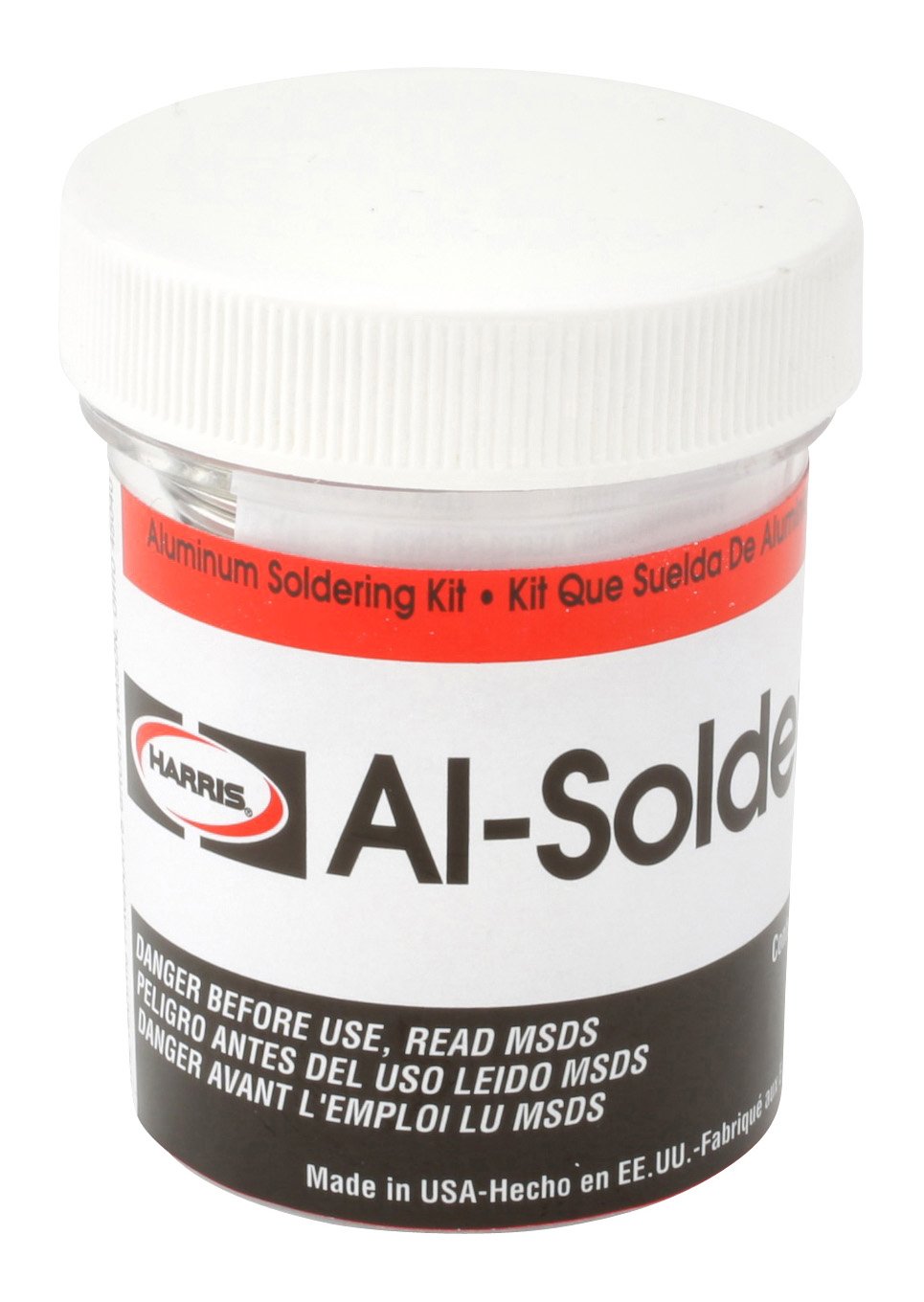Shop
- PCB Repair
- Products
- Luxury sofa
- Harris 500K Al-Solder 500 Aluminum Solder Kit
Description
Price: $31.50
(as of Dec 14, 2024 05:20:53 UTC – Details)

Solder alloy for torch or iron. Used to join all solderable alloys to each other and to dissimilar metals. Also for zinc die-cast. Forms excellent, corrosion resistant joints on the tough to solder aluminum alloys. Also beneficial as a high temperature solder on most other metals. Not recommended for magnesium.
Product Dimensions : 2 x 2 x 2.5 inches; 0.01 ounces
Item model number : 500K
Date First Available : October 9, 2008
Manufacturer : The Harris Products Group
ASIN : B001HWFM9Y
Tensile Strength – Up to 20, 000 PSI
Solidus – 391°F
Liquidus – 482°F
Good color match on aluminum and zinc die cast
Customers say
Customers have different opinions on the soldering iron’s functionality and leakage.
AI-generated from the text of customer reviews



B. ArnoldDecember 14, 2024
Good billet aluminum
Works well and wets easily to billet aluminum, which is great. I couldn’t get it to bond with cast aluminum, but that’s no surprise. Cast is notoriously hard to get anything to bond. Even welding it can be a real challenge.
MrCustomerDecember 14, 2024
Worked to repair very difficult radiator defect, with some caveats
First of all, the solder is 85% tin and 15% zinc. This is important because normal lead solder won’t wet or flow on aluminum. The zinc also gives it some corrosion resistance. Liquid melting temp is only 480 F, so it’s still easy to work with. I used a hot plate and a 1500W heat gun (hot air). This works much better then a torch. I will describe the proper technique and caveats, but first let me tell you what I needed to do.I bought a used 2020 Ktm 690 motorcycle that turned out to have a radiator leak that presented itself when up to temperature. It only leaked when the system got up to pressure, and even then, mort very much. But it was enough to lose coolant and hinder proper pressurization and cooling. I removed the radiator and discovered that there was a hairline crack on the back side along the edge of a tube, about 1 cm long. Definitely a manufacturing defect, as the rest of the radiator was almost new. A new one cost $500 for the part alone!That said, what you want to do is first remove some fins around the leak. Then lightly sand and file the area to reveal clean, fresh metal. Next, clean it very well with pure alcohol or something like brake cleaner that doesn’t leave a residue.If you have a hot plate, heat the repair area up to about 300 F. I used a thermocouple temperature probe like what you find on many multimeters by jamming the thermocouple into a fin on the other side. This helps to prevent overheating, which is really important to avoid oxidation and burning your flux.Then apply flux and sand or file the area under the flux a bit more. Then apply some more flux.Now it’s time to use the heat gun to bring the repair area up to about 550 F. Dip your solder in a little flux and wipe it across the leak while misdirecting the heat gun. DO NOT HEAT THE SOLDRR DIRECTLY. Thus, you have to alternate between soldering and heating to keep it above 500 F.Once you have wetted the area, you could follow up with ordinary lead free solder, which is easier to work with and melts at a lower temperature. I actually had to do this upside down to get the solder to pool up along the crack. Otherwise, it wanted to flow down and only covered it with a thin layer. In all, it took me about four attempts, pressure testing underwater each time with 22 psi of air.After the fourth attempt, applying solder upside down, I used my pressure testing setup and still found one microscopic pore very slowly leaking air. It probably would have held antifreeze, but why go through all of this effort just to find out?As a result, I coated the solder with a nice layer of JB Weld HighHeat epoxy, cured it at 250F for 1.5 hours with my hot plate. Then I painted everything black with 1200 F BBQ paint that I had.After running the engine for a while, it now works leak free. I’m fairly confident this will hold up for a long time. However, it was a lot of work and required solder and epoxy to get it perfect. If your radiator is less than $300, you’d probably be better off just buying a new one, especially if you don’t have a lot of experience with soldering and epoxy. If you are one of these shade tree mechanics with a 2000 deg F MAPP gas torch, a barn and a pipe wrench, I don’t advise attempting this. All of the YouTube videos I watched were of people just melting the solder on the radiator without flux, thinking they did a good job. They didn’t even wet the solder on the radiator. This is for people with a lot of knowledge, detail and experience. Think electronics and model railroad hobbyist.But hey, in the end, it worked and I learned a new skill and saved myself a lot of money. Since this was a long crack, and not a simple hole, I doubt any shop would be able too repair this.
Bela S.December 14, 2024
Flux was missing – product unusable
I received the transparent plastic container with the solder wire in it, but the small flux bottle was missing. Without the flux, the solder wire is unusable.
DavidDecember 14, 2024
Easy to Use, Good for Projects
Worked well getting things soldered onto aluminum
Zach SDecember 14, 2024
Flux is the best part
The aluminum solder is difficult to use but not because of this product but because aluminum is hard to deal with by itself. I use the flux and normal solder for repairing lipo batteries and swapping cells and it works great.
FarmerDecember 14, 2024
Worked great with a torch, read the tiny instructions and safety sheet. Flux bottle well sealed.
Worked great with a torch, as per the instructions, but not with a soldering iron yet (Hakko with adjustable temp and chisel tip). Used a regular propane torch on my test pieces, soldered 1.5 mm copper strip to a folded chunk of takeout container aluminum (like a throwaway baking pan) and the joint is rock solid. With the soldering iron I failed to get the copper to ‘tin’ with the solder. I think there is just too much heat conduction and this solder/flux combo needs a precise temp (narrow range) to work. With the torch I can dump more therms, heating at the non-working end of the part, and get the whole thing to the right temp. Basically you watch the flux and when it just starts to smoke a little you are at the right temp. Beyond this the flux no worky annymor. Zinc solder fumes bad, don’t breathe. I guess I’m kinda a chooch for giving 4 stars because it didn’t work the way I needed (soldering iron), but hey, why is this stuff so danged expensive? Oh, also, the flux bottle is well sealed with tape now. no leaky like the previous reviewers experienced.
JSinkDecember 14, 2024
Works well for fixing lipo cells
Worked good fixing aluminum tab lipos. The only bad thing is that it will ruin your soldiering tip
LivDecember 14, 2024
What A Sticky Mess!
The bottle of flux spilled inside the container that held the flux and the solder coil. The bottle still had the plastic wrap on the top but it spilled out anyway. Everything was covered in a sticky yellow goo. Gross!
Roy KormosDecember 14, 2024
The flux did leak,had to do a wiping.
Premier CoachDecember 14, 2024
Don’t bother. If it works, it is way too finicky. I’m handy enough to know what works, and what doesn’t. This doesn’t. If the manufacturer can’t make it simple enough to be used by non-pros, then they shouldn’t advertise it as easy or foolproof. Alternatively, lower the price to reflect the actual value of the item.